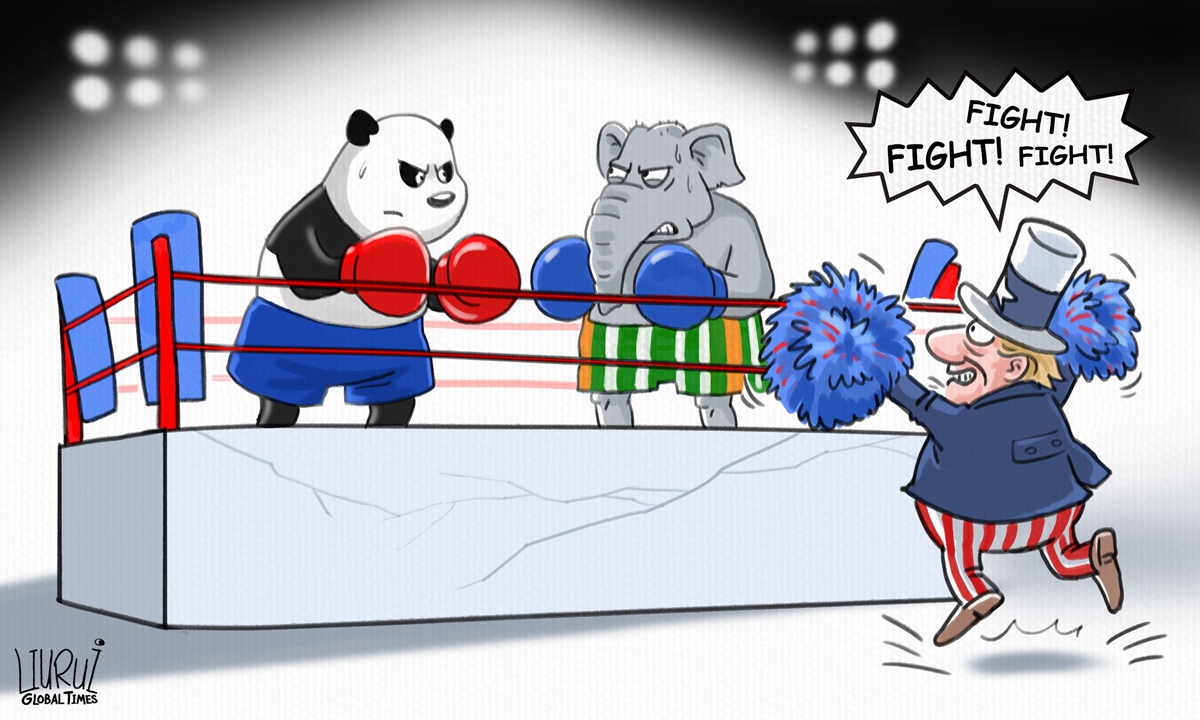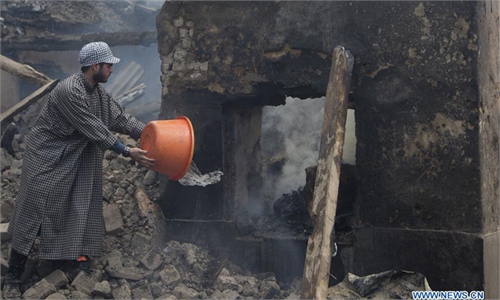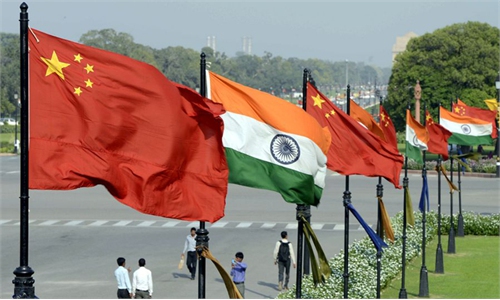India’s betting with Washington and Canberra is a poor move

Illustration: Liu Rui/GT
China-India border tensions have escalated recently -particularly with a fatal physical clash between border defense troops in the Galwan Valley region, which is located on the Chinese side of the Line of Actual Control (LAC).
In a bid to relieve tensions, both sides are making efforts and some consensus has been reached. Meanwhile, New Delhi has upgraded its bilateral ties with Canberra with a comprehensive strategic partnership. Is India hedging its bets?
Chinese State Councilor and Foreign Minister Wang Yi had a telephone conversation with Indian External Affairs Minister S. Jaishankar on Wednesday. Both sides agreed to address the serious situation provoked by clashes in the Galwan Valley impartially and abide by the consensus reached at the commander-level talks between the two militaries to cool down the situation as soon as possible. This will safeguard peace and tranquility in the border areas in accordance with the signed agreement. Although frictions between China and India have not been completely tackled, both sides recognize the significance of a peaceful resolution.
Territorial disputes are the basic and core contradictions between China and India. Seeking the status as a global major power and pursuing support from big powers to contain China has become a pivotal part of India's diplomatic strategy. Although India claims it adheres to non-alignment, it is in fact moving closer to other powers, or has forged quasi-alliances with them.
The gap in national strength between India and China has widened since the 1990s, but India's claim to disputed territory has not waned. Due to geopolitical rivalry, New Delhi has regarded Beijing as one of its biggest rivals and threats. India is clearly aware that on its own, it cannot gain any advantage in a confrontation with China. Diplomatically engaging with a third country has become a clear feature of India's diplomacy and relations with China.
In this sense, the US has become India's best choice. Seeing China's rise as a challenge, the US views India as a major partner to tackle the so-called China threat in the Indo-Pacific region. Some Indians also regard Japan as a natural ally that can help India contain China, as both Japan and India have territorial disagreements with China.
To contain China, the US proposed to build a "Quad Alliance" of the US, Japan, India and Australia. After making Japan a permanent partner of the Malabar naval exercise in 2015 (which was previously a bilateral drill between India and the US), the US tried to make Australia a permanent participant as well. India has also proactively strengthened relations with Hanoi and Seoul.
The US-initiated trade war against China has soured ties between Beijing and Washington. This year, China-US relations have been further damaged by a series of US actions. For example, the Trump administration passed the buck to China following its failures in dealing with the COVID-19 pandemic. The Trump administration added more than 30 Chinese companies and entities to a blacklist that restricts their access to US technology. Trump openly encouraged foreign companies to move out of China. US warships have operated frequently in the South China Sea and the Taiwan Straits.
The Indian government and some Indians have sensed opportunities from the China-US confrontation, which has emboldened them to be aggressive on the China-India border issue. During US President Donald Trump's state visit to India from February 24 to 25, he showed off his close friendship with Indian Prime Minister Narendra Modi. Also, while China-Australia relations remain tense, New Delhi and Canberra elevated their bilateral ties to a comprehensive strategic partnership on June 4.
In major-power competition, all countries want to play instead of being played as pawns. The US and other relevant countries may have a common purpose in dealing with China. But they all want to manipulate and profit off each other, instead of being used. If a serious conflict really breaks out between New Delhi and Beijing, India is not confident whether the US is a reliable partner. Therefore, it wants to counterbalance China with the help of the US. Yet it dares not go too far.
A country's ambition should match its own strength. To pursue the status as a major power and expand regional influence, a country's own national strength must be a decisive factor. No country can be great by relying on another country. A country may only hurt itself by opportunistically seeking ambitions that far exceed their actual national abilities.
The author is a senior research fellow of Academy of Regional and Global Governance, Beijing Foreign Studies University and president of Chengdu Institute of World Affairs. opinion@globaltimes.com.cn



